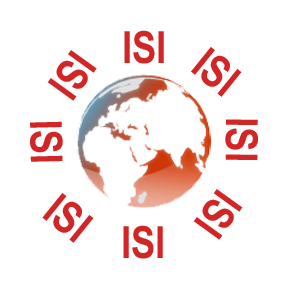The French and Indian War and its aftermath in North America (1756-1763)
Abstract
The European powers began their conflict in their colonies all over the world after the spark of war spread to four continents: North America, Europe, Asia and Africa in the year 1756, and thus the French and Indian War was part of that European conflict for control of the lands west of the Alleghany Mountains in the River Valley Ohio in North America, as the area west of those mountains was a vast land inhabited by the American Indians consisting of three Indian tribes (Seneca, Delaware, Shawnee) in the upper Ohio River valley, their number ranged from 3000 to 4000 Indians, and they depended on Hunting, fishing and agriculture, so they achieved self-sufficiency in addition to hunting animals such as beavers to take advantage of their fur for the purpose of trade, and at that time a small number of French and British merchants arrived through the region and practiced trade with the villages of the American Indians, which was represented by furs, food, metal products, cloth, firearms, and others. The Native Americans, with their strength as fierce warriors and skilled scouts during the French and Indian War, often made a difference to me by being on one side. The French and the British were either defeated or victorious.
It should be noted that the American Indian tribes were living behind the Ohio River Valley and surrounding the Great Lakes of Michigan, the tribes (Ojibwa, Potawatomi, and Ottawa) those tribes were allies of France, they called them (the Far Indians) because of their distance from Quebec, and the French always ask for the help of these warriors To provide support for them in the defense of their colonies in Michigan.
France had three colonies: Canada along the Saint Lawrence River, represented in Quebec and Montreal, Illinois in the middle of the Mississippi Valley and Louisiana, New Orleans and western Mississippi in Sault Ste. Mary - Michigan. The number of French settlers is about (70,000) throughout the French settlements, They depended in their economy on trade with the Indians, and it was a weak economic system, and the French colonies were not self-sufficient, they needed to buy food from the Indians or import it, and it is useful to note that the relationship of the French colonists with the American Indians was very different from the relationship of the British with the American Indians The French viewed the Indians as trading partners and established personal relationships with their leaders who traded with them, and became part of the Indian communities by intermarrying with them, while the British viewed the Indians as slaves and treated them with arrogance, arrogance and arrogance.
But as soon as the spark of the Seven Years' War in Europe reached North America in 1756, the British colonies prepared themselves for war with the French, and the conflict was supported by the ardent preaching of Protestant clergy, who were calling for the destruction of the colonies of New France Catholic, the colonial governments hated The use of caustic rhetoric of the clergy, but it used religion as a justification to increase troops to send in wars, and the soldiers themselves belonged to the common people who were very religious, and they considered themselves envoys from God, these factors combined to make the French and Indian War a colonial conflict in North America, which indicates The Americans refer to it as the (French and Indian War), and Canadians, especially those of French descent, refer to the conflict as the “War of Conquest,” while in Europe it is called the “Seven Years’ War.” These designations were not entirely accurate, because the conflict that erupted between the years 1756 1763 (preceded by hostilities two years before the official declaration of war), the war pitted the two great powers of the world (France and Britain) against each other in A major struggle for colonial control over North America.
Downloads

Downloads
Published
How to Cite
Issue
Section
License
Copyright (c) 2023 Tasnim International Journal for Human, Social and Legal Sciences

This work is licensed under a Creative Commons Attribution-NonCommercial-NoDerivatives 4.0 International License.





